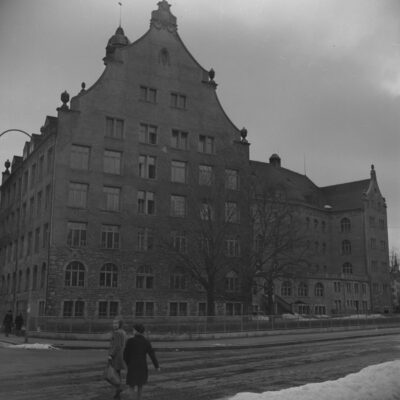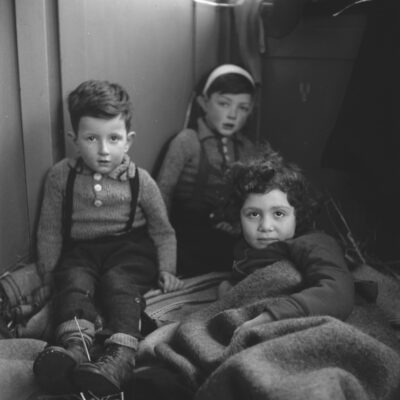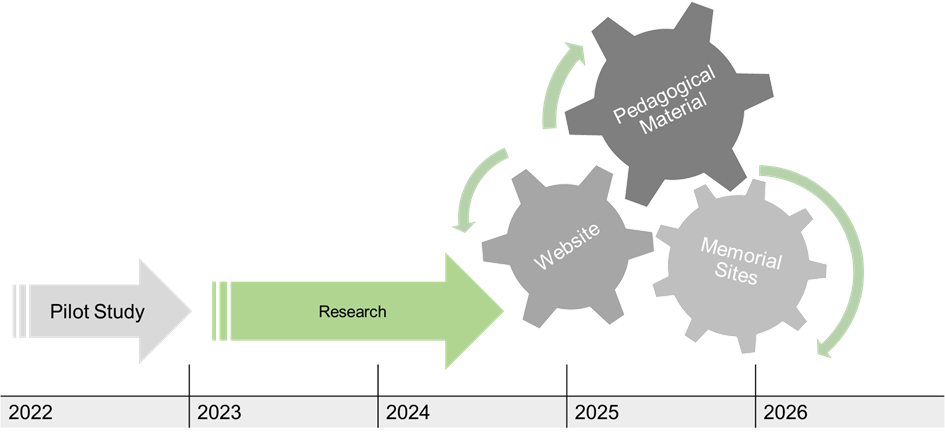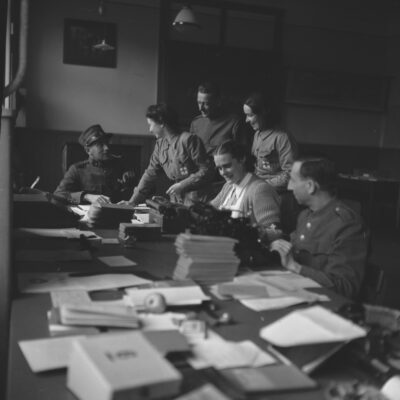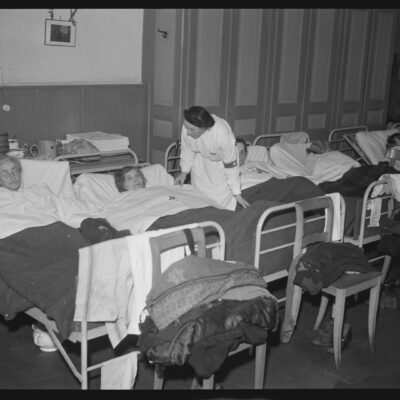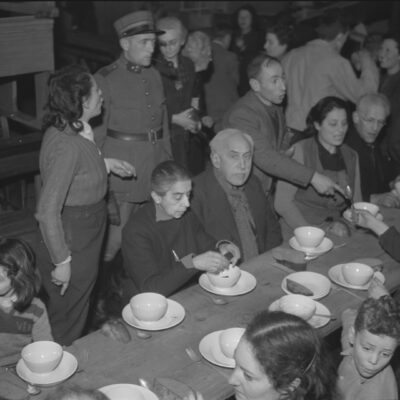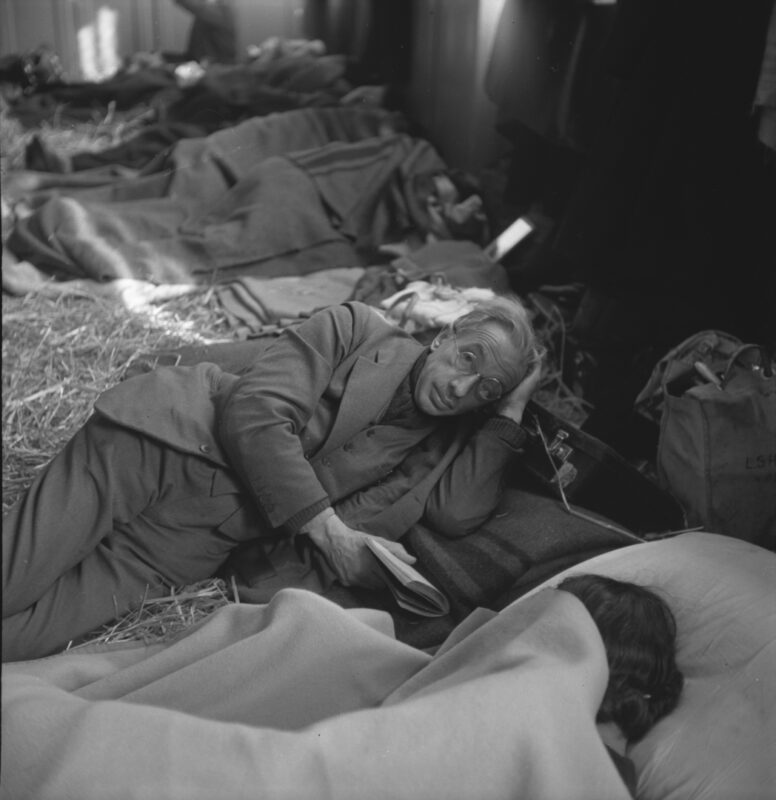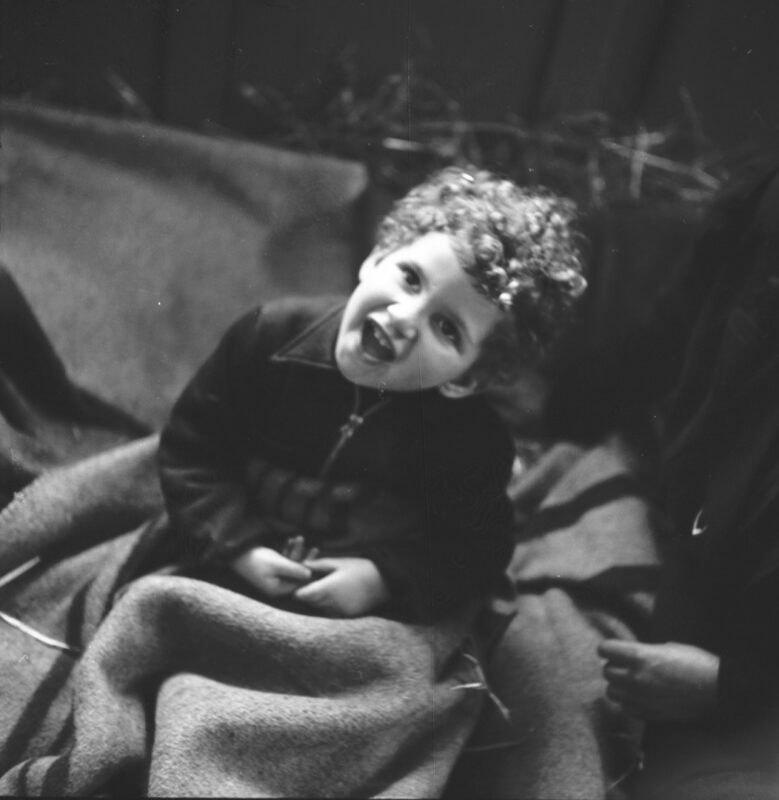From Theresienstadt to St. Gallen
In the final months of World War II, several successful attempts were made to save a few thousand Jews from systematic murder by Nazi Germany. Among these were some 1,200 former inmates of Theresienstadt concentration camp, who departed the camp by train on February 5, 1945. Most of the passengers were elderly people, but there were also children present. The liberated prisoners came from Germany (including Austria), the Netherlands and Czechoslovakia. They reached Switzerland early in the morning of February 7, 1945, via Kreuzlingen and St. Gallen, where they were quartered for several days in the school building Hadwig, which today is part of the campus of the St. Gallen University of Teacher Education (PHSG).
The effects of Swiss refugee policies
In accordance with the harsh Swiss refugee policies at the time, the 1,200 rescued Jews onboard the “Train to Freedom” had to leave the country as quickly as possible. Some returned to their home countries and many emigrated overseas or to the British Mandate territory of Palestine. Only a few of the passengers, most of them of advanced age, were allowed to remain in Switzerland.
A rescue operation based on a private initiative
The liberation of the prisoners began as a private initiative of the Swiss couple Recha and Isaac Sternbuch, who, though based in Europe, worked for the North American “Union of Orthodox Rabbis of the United States of America and Canada” (UOR) and its relief committee “Vaad Ha-Hatzalah”. In October 1944 they had gone to the former Swiss Federal Councilor Jean-Marie Musy with their rescue plans. Musy had personal contacts in Nazi circles due to his sympathies for fascism, and he had already succeeded in having individuals released. Plans for the rescue of the Jewish prisoners finally took shape when Musy met several times with Reichsführer SS Heinrich Himmler in Germany to negotiate the liberation. The negotiations also included discussions of a plan to rescue of 1,200 Jews from concentration camps each week. However, this extension of the rescue operation failed.
The first days in St. Gallen
During the first days the liberated prisoners spent in St. Gallen, Swiss Photographer Walter Scheiwiller took a series of photographs for the agency “Photopress Zürich” (today: Keystone).




